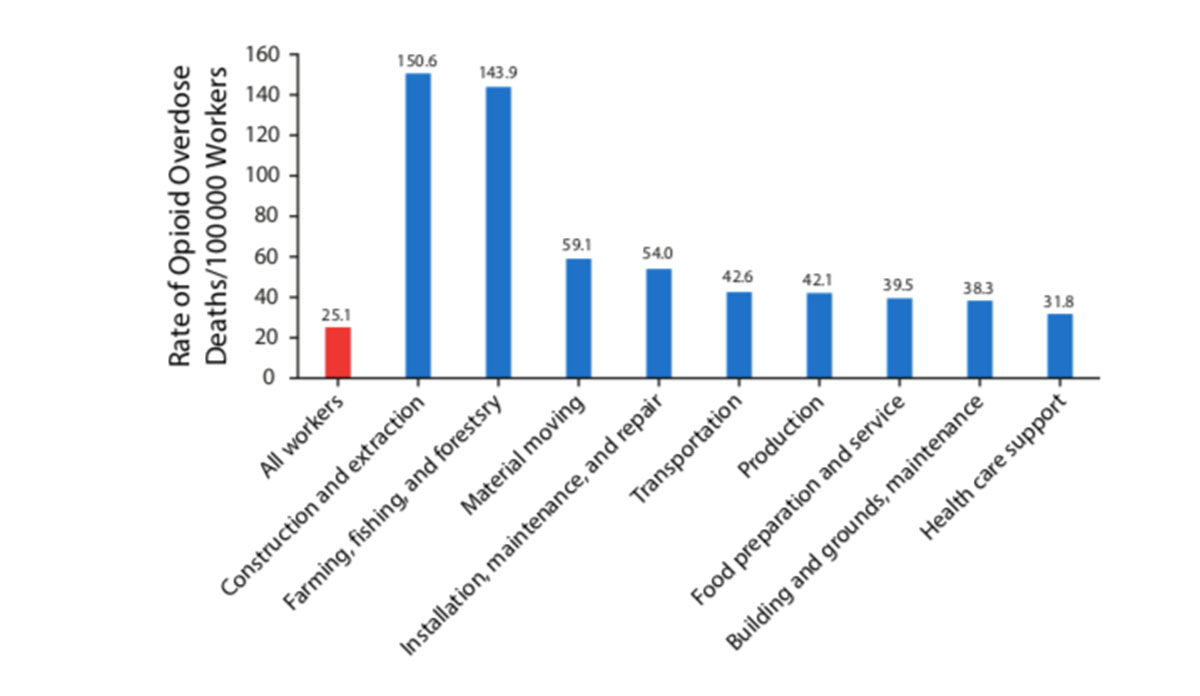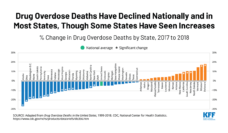Drug overdose is one of the leading causes of accidental death in the United States. And two-thirds of those deaths involve opioid use.
There is a misconception that people struggling with opioid misuse are not in the workforce. So, employers are usually left out of efforts to address the opioid crisis. In reality, occupation-related consequences, such as musculoskeletal pain and work stress, likely contribute to the initial use and eventual dependence on opioids.
Shaw, Roelofs, and Punnnett discuss the two major causal pathways that lead to chronic opioid use among workers. The first begins with a physical injury where a worker’s pain is often managed by prescribed opioids. The second pathway is via stress. Job instability and high-pressure positions tend to lead to anxiety and depression, which is again managed by medication. But after receiving medication, the labor continues and so does the stress and the pain. When the prescriptions stop, workers are left to manage pain in their own way. Some eventually turn to illicit drugs, which often have deadly amounts of synthetic opioids such as fentanyl. Seventy three percent of opioid overdose deaths are caused by synthetic opioids.
The Massachusetts Department of Public Health analyzed death certificates for opioid-overdose deaths by industry. Construction and extraction work, which includes professions such as coal mining and petroleum drilling, had a 6 times higher rate of opioid overdose deaths than all workers. Farming, fishing, and forestry workers had opioid overdose death rates that were 5.7 higher than other workers.
Nearly 70% of workplace injuries are never captured in administrative tracking systems. An analysis of occupational injuries revealed that many businesses incentivize low injury rates, so reporting of injury is underestimated. Additionally, fear of retaliation, job loss, and resentment from coworkers prevent workers from reporting injuries. But reporting workplace injuries is crucial for employers attempting to develop an organizational response to the opioid crisis.
By reducing workplace hazards, encouraging reports of physical injury and mental health concerns, and providing resources for opioid addiction education and treatment, employers can play an important societal role in reducing opioid death.
Databyte via William S. Shaw, Cora Roelofs, and Laura Punnett, 2020: Work Environment Factors and Prevention of Opioid Related Deaths. American Journal of Public Health 110, 1235_1241.














